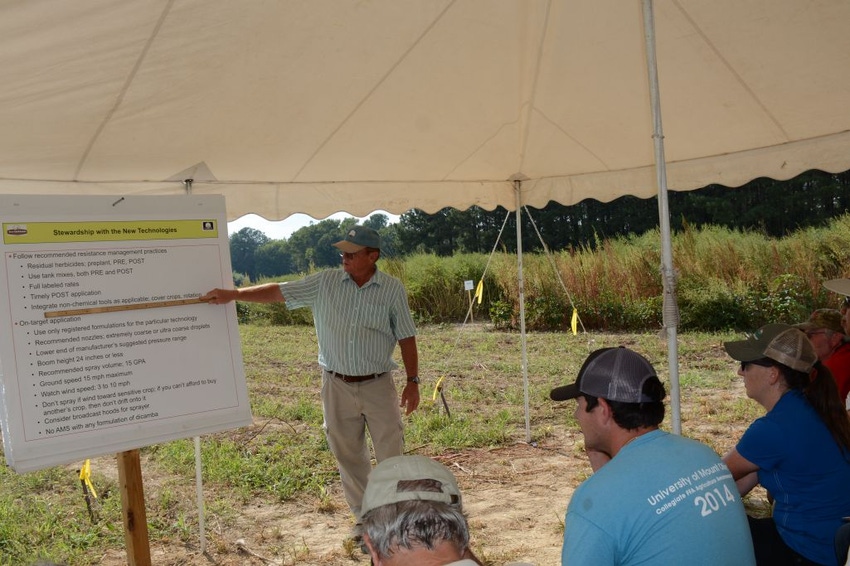
Alan York, William Neal Reynolds distinguished professor of crop science at North Carolina State University, says he doesn’t know when cotton farmers will see labels for Enlist or Roundup Ready 2 Xtend cotton, but once approval comes stewardship is vital.
Cotton farmers are still waiting for the go ahead from the Environmental Protection Agency to use the new auxin-based herbicide formulations in Enlist Duo and Roundup Ready 2 Xtend with still no word on a label approval as the 2016 crop season draws to a close.
Roundup Ready 2 Xtend is a glyphosate with dicamba product marketed by Monsanto while Enlist Duo is a glyphosate and 2,4-D mixture marketed by Dow AgroScience. York said both systems look really good for controlling troublesome weeds such as Palmer amaranth, but resistance management and drift management will be critical in both systems.
“We are very much concerned that we have to treat this new technology right,” York said at a Cotton Field Day held Sept. 15 at the Upper Coastal Plain Research Station in Rocky Mount,
York urged cotton farmers to be prepared for resistance because “just as sure as you’re sitting there, we’re going to get it.
“For the most part, 2, 4-D and dicamba is an add-on for what you’re already doing,” York said. “I don’t think you’re going to drop a lot of other things. We’re going to continue to strongly promote residuals. Most of us are in no-till cotton now so we’re going to continue to promote a residual such as Valor as part of the preplant burndown. We’re going to continue to promote (pre-emergence herbicides) and realistically mixtures of pres. We’re going to continue to talk about residuals with our posts, products like Warrant and Dual," he said.
York said the best way to head off resistance is to use tank mixes containing mixtures with different modes of action to control resistant weeds such as Palmer amaranth. Using the full label rate and timely application is vital in resistance management.
“We need to start thinking outside the box or at least make that box expand a little bit,” York said. “I don’t mean to sound pessimistic, but I guess I am. We look at what we have to work with today and we don’t see anything new coming, and we keep on losing things to resistance. We’re running out of tools so we have to make the most of what we have.”
In addition to resistance management, York emphasized the importance of keeping compounds on target and avoiding drift. He highlighted the issues in the Mid-South with dicamba drift damaging off-target crops that has garnered negative publicity across country as a clear example of avoiding drift.
“We don’t want any of that here. That thing has been a black eye to the industry. It will result in additional regulations, and I’m convinced it’s holding up the registrations of these compounds involved,” York said.
Using the right nozzle to ensure large droplets is important for avoiding drift as is the right application pressure to make sure the nozzle delivers the compound in the pattern that the nozzle is supposed to make. “With the manufacturer’s suggested pressure range, we tend to want to be on the lower end of that,” York explained.
As for boom height, York noted that the higher you carry the boom, the longer it will take to deliver the compound to the ground and the greater the chance wind will move the compound. “We want to maintain the boom height at a maximum of 24 inches,” York said.
“Basically, if the wind is blowing toward a sensitive crop, don’t spray that day. You have to make the decision how far down yonder is that sensitive crop, and I got a recommendation to help you decide that: If it ain’t your crop and you don’t want to buy it, don’t spray that day.”
About the Author(s)
You May Also Like






